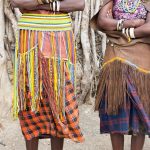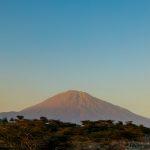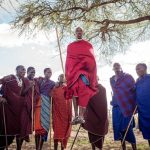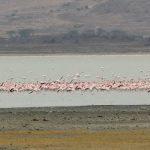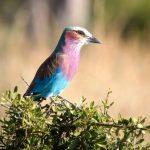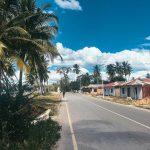Tanzania’s Northern Circuit is renowned for offering some of the finest game viewings in all of Africa. Its natural abundance of wildlife, along with the annual migration of millions of animals across these northern reaches, make up a flourishing ecosystem that is now benefiting from hard-fought conservation measures. Many hundreds of hectares of these superb rolling landscapes have been preserved in their natural state due to the inward-looking politics of an impoverished country that never had the funds for development or impetus to increase tourism. As little as twenty years ago, wide tracts of land were inhabited only by rural nomadic tribes.
Most safaris and many mountain-climbing expeditions in Northern Tanzania begin and end in Arusha. Tour operators generally assemble all equipment here before departure, and many people spend at least one night in the richly foliaged and fertile hillsides around the town or in more upbeat Arusha itself before taking to the road.
The safari experience starts here…The westward road from Arusha towards Manyara, Tarangire, Ngorongoro and the Serengeti runs across the wide, open plains of Maasailand. It is straight and clear, with views across the plains to an arc of craggy mountains that make up a part of the Great Rift Valley escarpment on the horizon. This is the land of the Maasai tribe, a wild and mainly uncultivated stretch across which they roam and graze their cattle.
Often the unaccustomed eye can make out nothing but wilderness in each direction, a greenish sea under the shimmering sun. Then, in the distance, a dart of red picks out a lone Maasai walking from one far region to another, often on a journey of a day or more. The Maasai people have generally aspired to remain true to the traditions of their tribal lifestyle and fought to resist the encroaching changes from the modern world. But on this route to the Northern Parks, it is common to see Maasai who have made one proud concession to modernity and who now make the journey along the tarmac way on a shiny Chinese frame bicycle. Yet they wear their traditional dress of red shuka robes and pedal armed with a well-honed stick to ward off snakes.
All driving safaris from Arusha require a minimum two-hour drive to the nearest park gate. This always takes a route through the centre of Arusha, past the Cultural Heritage Centre and Snake Park on the outskirts of town and on into the magnificent spread of countryside beyond.
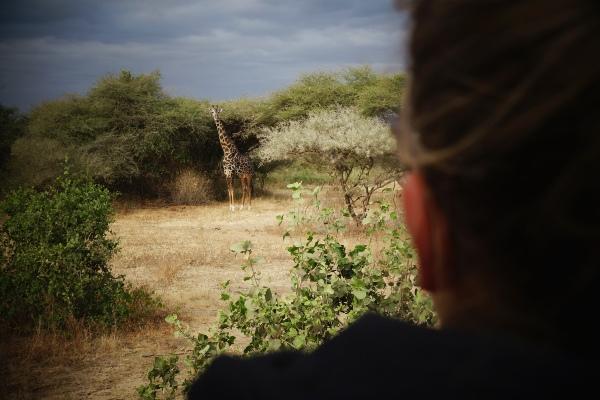
The Northern Tanzania Circuit – When to go
The long rains in April and May provide the perfect excuse for the smaller tented camps and lodges to pack up and close for two months, but the Serena, Sopa and Wildlife Lodges stay open year-round, and provide a rare opportunity for safaris during the ‘green season’. June is a wonderful month to visit, and not yet peak season so it’s sometimes possible to still get the lower green-season rates. By travelling so early in the season you risk encountering the odd shower, the roads are invariably in a pretty dire condition and the lodges tend to struggle to get going again as they deal with the inevitable repairs, especially the permanent tented camps.
The land is rejuvenated after the rains, and the greenery and abundance bring widespread contentment. The land around the fertile reaches of the Rift Valley is especially beautiful. June is a good time for bird watching and offers a profusion of butterflies, but it is a little harder to spot animals, as the abundance of standing water means they disperse and disappear into the high grasses of the plains.
Between August and early November, it gets progressively hotter and dryer, although the humidity is pleasantly low and temperatures tend to drop a few degrees in the evenings. As the dry season draws on, more and more wildlife congregates around the diminishing watering holes, convenient for hungry lions and snap-happy tourists. The short rains should come in mid-November, generally bringing showers for an hour or two each day, or at night. Clouds do not gather for long, and the sun regains its position of supremacy soon after.
December is very hot, making the Christmas holidays popular, and it remains pleasant through the New Year. Between January and March, it gets progressively more humid, gradually building up to the long rains in April and May. Visitors to the Serengeti between December and July should have a chance to catch up with the migrating herds of wildebeest in certain areas of the Serengeti, listed below in the Serengeti chapter.
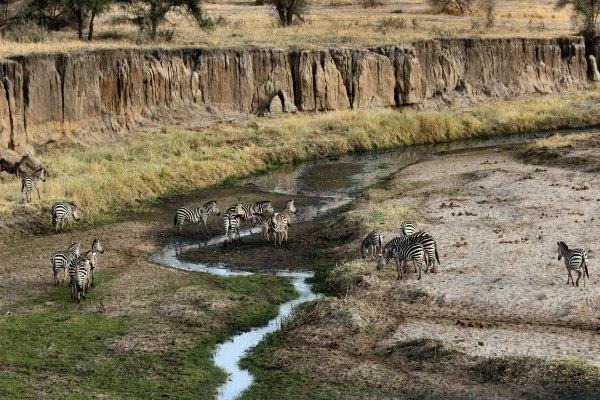
The Northern Tanzania Circuit – History
The land covered by all the conservation areas in northern Tanzania is characterised by geographical extremes. Here are Africa’s highest mountains, alkaline lakes and hot mineral springs, all shaped by volcanic action, and making up an extraordinary landscape. This is the result of its precarious position, poised over the meeting point of huge tectonic plates beneath the earth’s crust, in the realm of the Great Rift Valley.
The Great Rift, approximately 6,400m long, 50km wide, and varying between a hundred and a thousand metres deep, has created a vast and tempestuous fertile spread, without which this large expanse of East Africa might be as arid as the wide Sahara. Now the landscape is dramatically undulating, thrown upwards in rifts, faults and craters of dramatic volcanoes that have covered the land in rich minerals, making it green and prolific and creating lakes, rivers and clouds.
The most famous of these wild northern plains is the Serengeti, formed of layers of ash blown out by volcanic eruptions from Ngorongoro and the three cones that make up Kilimanjaro. Its name comes from the Maa phrase ‘Siringet’, meaning ‘endless plains’, as the Maasai people who once made their lives on its wide expanse called this region when they emigrated here 200 years ago.
The first European to glimpse these plains was probably the German Explorer Baumann in 1892, but the Serengeti first captured the imagination of the world in the 1920s, when reports of the unusually large number of lions here began to circulate among the interested echelons of society, especially those with a gun and a taste for the hunt. It was soon deemed necessary to make the endless plains a game reserve in 1950, and then a fully protected National Park in 1951.
Later, in the 1960s, the work of Professor Bernhard Grzimek, then president of the Frankfurt Zoological Society and author of the book Serengeti Shall Not Die, (published in 1959), highlighted the importance of protecting the land required by millions of wildebeest, zebra and antelope in their annual migration across hundreds of miles of seasonal fertile plains.
Professor Grzimek and his son Michael believed in preserving the region as close to a ‘primordial wilderness’ as possible, and that no men, not even native tribes, should live inside the nature reserves. As a result of their efforts and subsequent studies into the annual path of migration in Northern Tanzania, the boundaries of the Serengeti were extended and altered and the Ngorongoro Conservation Area emerged as a separate entity.
Many residents of Maasai on the plains were moved to other regions, and debate continues as to the fairest future for those who were effectively displaced from the land. Today the Serengeti-Mara ecosystem is made up of a vast mosaic of adjoining Game Reserves and National Parks crossing the border between Northern Tanzania and Southern Kenya and covering over 9,600 square miles of grassland and forest.
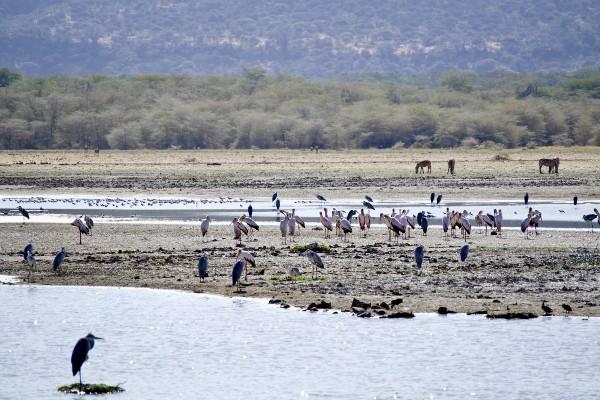
The Northern Circuit – Where to Go
The immense size of the Serengeti National Park alone, which at 5,600 square miles exceeds the size of Belgium, Ohio or Wales, ensures each vehicle at least one blissful moment of apparent absolute isolation in a wilderness that seems to be made up of the very stuff of original creation.
The neighbouring Ngorongoro Conservation Area (NCA) is a markedly different environment, visibly shaped by volcanoes and the tectonic plate action of the Great Rift. The land is pockmarked with giant craters, the most famous of which, the Ngorongoro Crater, has attracted an unusually rich variety of resident and migratory East African wildlife. Nowadays these highlands are also home to a large population of the Maasai tribe, many of whom have been displaced from the surrounding National Parks. The NCA aims to help preserve their traditional tribal lifestyle while also conserving the environment for wildlife and serving the growing tourist market.
A large tract of land at Tarangire, and subsequently a swathe between the escarpment of the Great Rift Valley and Lake Manyara, became National Parks during the 1970s. These smaller National Parks in the north are also worth exploring. Lake Manyara National Park is an easy and enjoyable two-hour drive from Ngorongoro and a completely contrasting environment. Lush green forests, palm trees and clouds of butterflies surround visitors at the gate and tempt you into the magical maze of driving routes through the woodlands and glades that lie between the sheer escarpment of the Great Rift Valley and the shining soda lake waters of Lake Manyara.
Manyara National Park is a haven for birdwatchers, like its neighbour on the southern side of the plains of Maasailand, Tarangire National Park. Tarangire has a more open, hilly landscape studded with ancient baobab trees, and stretches along either side of the Tarangire River, with superb views along the length of the valley. This is the central water source for all residents and passing wildlife, and during the dry season, the park holds a high concentration of wildlife, at this time second only to Ngorongoro Crater and the Serengeti.
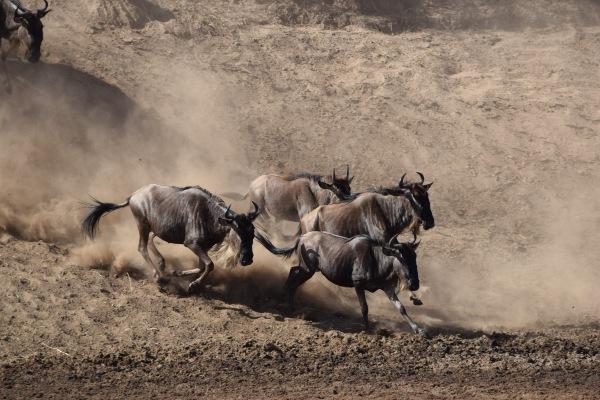
More about the Area
These northern parks support a vast ecosystem as herds of wildlife travel according to the season across the boundaries of each park and between the borders of Kenya and Tanzania. The Northern Circuit has evolved into a sequence of conservation and game-controlled areas directly related to the natural distribution of wildlife in these areas, which specifically include the land required by migrating animals in the course of the year. Each of these parks and conservation areas that protect and conserve local wildlife relies on the mutual preservation and protection of the outlying areas. Thus the Northern Circuit is far more than simply a pleasure park devised for tourists.
Widespread international interest in the unusual balance of such a wide-ranging ecosystem has meant that the Northern Circuit has benefited from extensive research and foreign investment, its infrastructure and experience with tourism and conservation are far ahead of the rest of the country. It is said that since 1966 the Serengeti ecosystem has been one of the most studied areas in the world.
The northern parks are way ahead of the rest of the country when it comes to conservation issues, and set precedents for other parks to follow or avoid. Poaching continues to be a real problem for all conservation areas, especially given the serious and widespread rural poverty. Villages on the outskirts of parks and game reserves tend to rely on wild animals for food, and kill without remorse when crops or livestock are threatened or destroyed by ranging wild creatures. Animals such as antelope, buffalo and zebra are sold from the hunting reserves at far lower prices than farmed meat, but free will always prevails over cheap when life is so hard won.
Tanzania National Parks Association (TANAPA) and a number of foreign investors – see details in Conservation, p xxx – have worked to combat this situation by means of education and improving living standards in outlying villages, but have been defeated and demoralised by an unforeseen but predictable response to their attempts. Once they have built schools and encouraged new business in outlying villages, the news spreads quickly, and the local population fast increases as outsiders move in to share the benefits. Problems of demand outstripping supply arise once more, and this most hard-to-manage small-time poaching begins again.
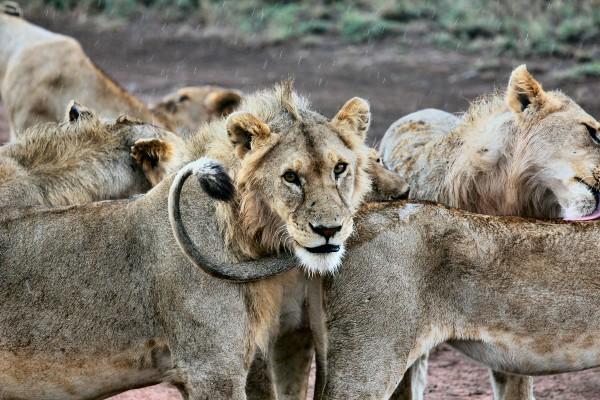
The Northern Tanzania Circuit – Around Lake Manyara
Before reaching the National Park you pass through a colourful and rapidly growing small town called Mto Wa Mbo, which translates enticingly as ‘River of the Mosquito’. Here is the Milton Keynes of the Northern Circuit; a new town that has developed since the irrigation of this previously dry and barren stretch of land during the 1950s. The project has successfully transformed hundreds of acres of land into profitable ground for farming and attracted newcomers from all over the country. Nowhere else in Tanzania have so many different tribes gathered together in such a small area, and with each practising traditional methods of production there is a fascinating spread of activity.
Chagga people from Kilimanjaro make banana beer, a farmer from Kigoma produces palm oil, the Rangi people make baskets and mats from papyrus, and those of the Sandawe make bows and arrows to hunt and the Maasai herd their cattle across the surrounding plains. There are a number of low-budget hostels and campsites here, and several bars and Dukas for last-minute provisions. an evening meal and picnic lunch [(find out what they are called!)]
A Cultural Tourism Programme has been developed at Mto wa Mbu, with advice from the Netherlands Development Organisation SNV
Manyara National Park is approximately three hour drive from Arusha through Maasailand, following the direction of Tarangire for most of the way until the crossroads. This final right-hand stretch of the road to Manyara has had a troubled life as a result of harsh rains and potholes and can be a long and bumpy ride. At the time of writing, there is a concerted effort to fix the road.
The children along this route have grown accustomed to the passing tourist trade. Many are trying to raise money for their schooling and often ask for pens. The problem with giving money to children who run into the road is that it encourages them to do so, and can be the cause of accidents – especially as the road improves and the traffic speed increases.
The Maasai people throughout this region are impressive looking, and their photogenic harmony with their surroundings can be very inspiring to aspiring photographers. But after decades of white-faced tourists rudely sticking cameras at these strangers and snatching their image with no word of thanks, many Maasai – especially those living close to the parks – will be reluctant to let you photograph them without paying them a small fee for the privilege.

